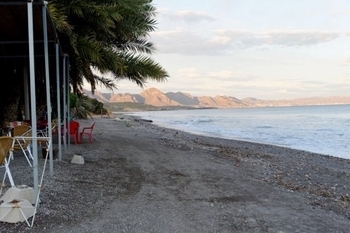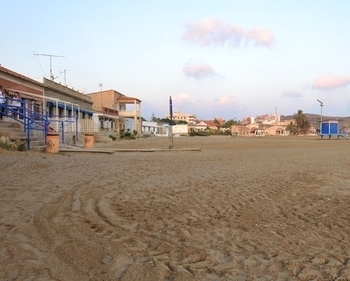article_detail
Date Published: 29/11/2010
La Ley de Costas, what is it?
La Ley de Costas within Murcia, South West Murcia
 There is a law in Spain which many people buying property should be aware of as it may change an attractive dream seaside property into a nightmare. There is no desire to scaremonger, purely to urge anyone considering purchasing a waterfront property to do detailed research and ensure that the services of a good professional are contracted before contemplating any purchases and thorough searches and checks undertaken to ensure buyers do not inadvertantly purchase a property affected by this law.
There is a law in Spain which many people buying property should be aware of as it may change an attractive dream seaside property into a nightmare. There is no desire to scaremonger, purely to urge anyone considering purchasing a waterfront property to do detailed research and ensure that the services of a good professional are contracted before contemplating any purchases and thorough searches and checks undertaken to ensure buyers do not inadvertantly purchase a property affected by this law.
The information below comes from a website run by a group who are campaigning to increase awareness of the seriousness of this law, and we will add on any information to this posting which relates to the application of this law in Murcia as and when stories appear.
Use the keyword search box on this page to search the word Costas, and once the articles have appeared, they are linked via a thread at the bottom of the page.
In the Region of Murcia there are many locations threatened by the Ley de Costas, particularly along the Mediterranean coastline and the areas of the Mar Menor first developed for tourism. The properties affected are mainly older buildings, built in the 1950s to 70s, when the area started to become popular with visitors from the cities and there are a large number of properties which will require demolition before 2018 which is when most of the leases expire.
Website of the PNALC, Plataforma Nacional de afectados por la Ley de Costas, Click PNALC
The Spanish Coastal Law (ley de costas 1988) defines a public domain area along the coast and a further zone where special restrictions apply to private ownership. The aim is to make the whole length of the coastline accessible to the public and to defend the coast against erosion and excessive urbanisation.
 Basically there are two zones separated by a demarcation line (deslinde). The two areas are, the public domain, in which there can be no private ownership, and then a private zone of 500 meters in which there are several areas and various restrictions to private ownership, the restrictions are very stringent nearer the sea but get more lenient as you get further away from the sea.
Basically there are two zones separated by a demarcation line (deslinde). The two areas are, the public domain, in which there can be no private ownership, and then a private zone of 500 meters in which there are several areas and various restrictions to private ownership, the restrictions are very stringent nearer the sea but get more lenient as you get further away from the sea.
The public domain (dominio publico maritimo terrestre DPMT) has a very wide definition, including :-
1) the surf zone and the beach.
2)all areas where the sea waves reach or have reached in the worst known storms.
3)all areas where there is sand, shale or pebbles, whether or not it is built on or whether or not the waves ever reach there, up to a point where the effects of the coastal winds are negligible and the area is not necessary for coastal protection.
4) all areas reclaimed from the sea
Inside this public domain everything belongs to the state and you automatically lose ownership rights . If you can prove the property is legal and was built before 1988 you can apply for, as compensation, a concession to use the property for 30+30 years, otherwise it can be demolished. The concession however can be rescinded at any time by the authorities if it is in the "public interest" and the only indemnification is the cost of the buildings on the property, ie. not including the land. You cannot sell the house or concession (but you have to continue paying the mortgage and all running and maintenance costs) and you cannot leave it to your children (unless they are living there when you die).
The private area on the other side of the demarcation line (deslinde) is split into two zones, the first 100 meters is the protection zone and the next 400meters is the zone of influence.
Inside the 100 meter protection zone private property is allowed if legally built before 1988 and on land officially recognised as urban land in 1988 and even then it must be a minimum distance of 6 meters from the demarcation line or else it can be demolished.
No new build or extensions are allowed and you need permission to do any maintenance.
The protection zone is reduced to 20 meters if the urban land was consolidated before 1988.
Within the zone of influence restrictions still apply but are less intrusive, you are allowed to build new property, but for example, you are not allowed to build lines of high rise properties.
The "Asociation of people affected by the Spanish coastal law" (PNALC) is a group of people who own legal property and are affected by the coastal law and aims to:- publicise the issue nationally, within Europe and globally: monitor the application of the law: when necessary advise members how to defend against illegal application of the law. We also want to help the authorities to change the abusive application of the law.
We think that sometimes this law is being applied in an arbitrarily and retroactive way and many property owners are facing "legal uncertainty"
article_detail
Contact Spanish News Today: Editorial 966 260 896 /
Office 968 018 268










